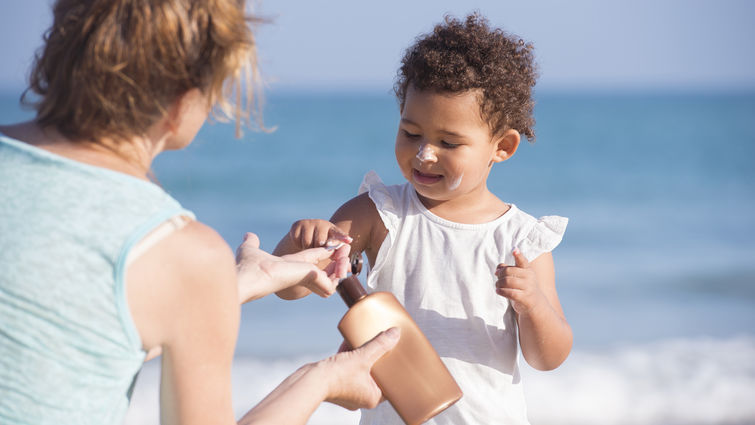
As summer starts to peak, people naturally spend more time out in the sun. Ultraviolet (UV) rays — which come from the sun, as well as objects like tanning beds — are the leading cause of skin cancer, according to the American Cancer Society. Too much exposure can also cause sunburn, eye damage and early wrinkles.
Mark Reeves, MD, PhD, director of the Loma Linda University Cancer Center, identifies common skin cancer risks and what can be done to avoid them.
Apply sunscreen. All sunscreens go through the FDA's Broad Spectrum test. Use an approved broad-spectrum sunscreen with an SPF of at least 30. Make sure to cover all exposed areas of the skin, reapplying as new areas become exposed. It is also important to reapply at least every two hours, or after swimming or sweating, as even water-resistant sunscreens are not waterproof. Sunscreen should be applied on all uncovered skin, even on cloudy days during the summer.
Avoid the peak hours of the sun. The sun’s rays are strongest between 10 a.m. and 2 p.m. daylight time, so avoid being in direct sunlight during these hours if possible. Since this window is when UV exposure is likely to be at a maximum, be careful to wear protective clothing and be conscientious about using sunscreen during these times.
Wear sunglasses. Make sure to protect your eyes with sunglasses that block UV rays. Prolonged exposure to the sun's UV rays has been linked to eye damage — such as corneal sunburn, called photokeratitis — and can even cause temporary vision loss. In addition to sunglasses, wearing a hat or visor on sunny days can reduce exposure to harmful rays in your eyes.
Avoid direct sunlight. Lower your risk of harmful sun damage by limiting direct exposure to the sun. This includes staying away from sunlamps or sunbeds, which produce ultraviolet radiation to create a surface tan. Staying in the shade whenever possible can help protect from UV rays and still provide the opportunity to enjoy the outdoors.
The keys to protection are prevention and early discovery. Using the strategies above can help you maintain safe, healthy skin. If you see something suspicious on your skin — such as a growing or discolored mole — see your doctor.
Visit lluh.org/cancer-center to find a provider or to learn more about skin cancer.
